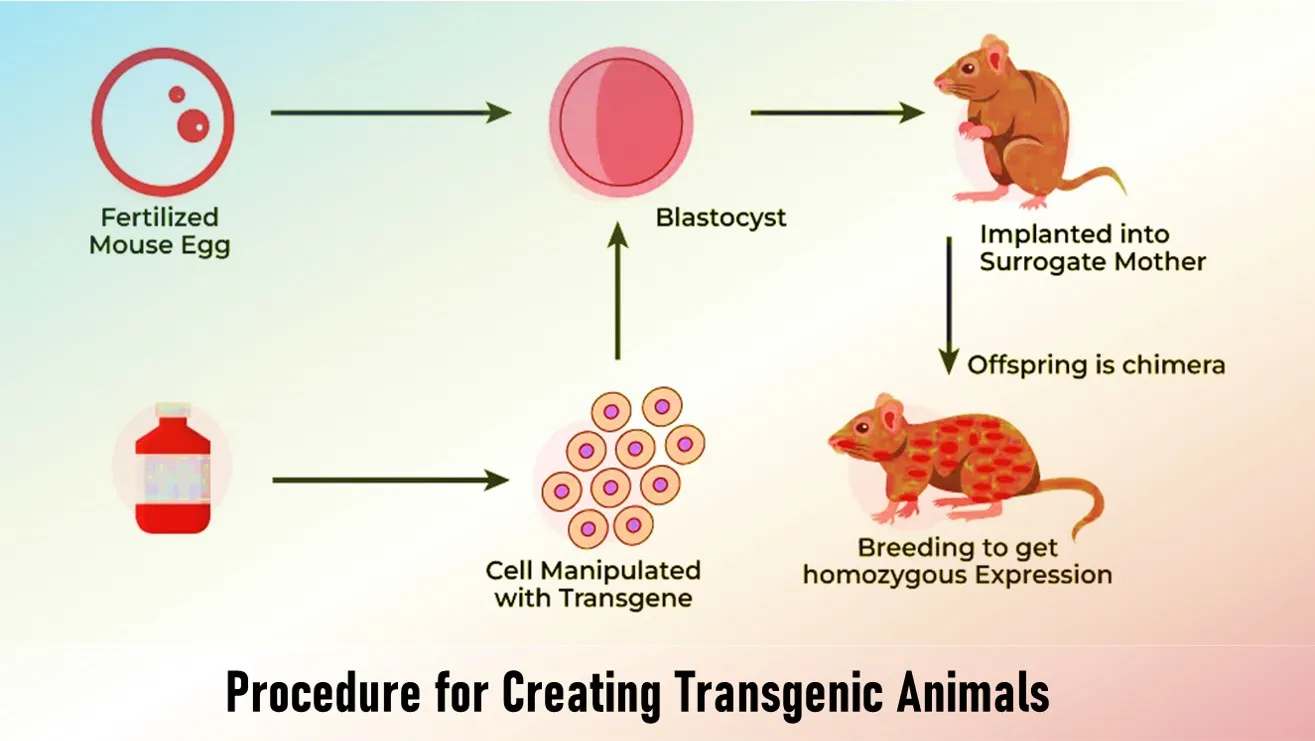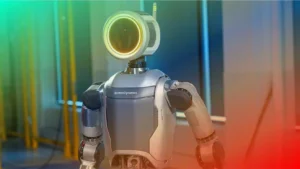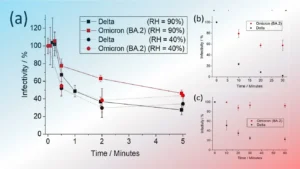If you are looking for: What are Transgenic Animals? Procedure for Creating Transgenic Animals. Applications of Transgenic Animals in Agriculture, Control of Vectors, Advance Human Health, Enhanced Nutrition, Molecular Farming, Enhance Food Production and Quality and its Ethical Issues.
What are Transgenic Animals?
Animals that have had their DNA manipulated to possess and express an extra (foreign) gene are known as transgenic animals.
Examples include transgenic rats, rabbits, pigs, sheep, cows and fish.
Procedure for Creating Transgenic Animals
The most common method for producing transgenic animals is gene transfer by DNA microinjection, which involves the following steps:
- DNA containing the desired transgene is identified and cloned before insertion into the animal host.
- The host animals are induced to superovulate and their eggs are collected.
- The eggs are fertilised in a laboratory dish.
- Using a fine, hollow needle, a solution of DNA containing the transgene is injected into the male pronucleus of the fertilised egg before it fuses with the female pronucleus.
- The transgenic embryos are grown in cell culture and then implanted into the uterus of a surrogate mother, where they complete their development.
- Some of the baby animals will have the transgene stably integrated into their chromosomes. In others the process fails and the transgene is lost.
- Those that received the transgene and maintained it stably are called founder animals.
Applications of Transgenic Animals
Transgenic Animals in Agriculture
Practical applications of transgenesis in livestock production include
- Enhanced prolificacy and reproductive performance,
- Increased feed utilisation and growth rate,
- Improved carcass composition,
- Improved milk production and composition, and
- Modification of hair or fibre.
Control of Vectors
- British company Oxitec has created genetically modified male mosquitoes that carry a “self-limiting gene”. When they are released into the wild and mate with females their offspring do not reach adulthood, so they do not contribute to the spread of the Zika virus.
- Other researchers are looking at using genetic modification to curb the spread of malaria.
Advance Human Health
- Transgenic animals can improve human health by producing novel replacement proteins, drugs, vaccines and tissues for the treatment and prevention of human disease.
Enhanced Nutrition
- Transgenesis allows improvement of nutrients in animal products, including their quantity, the quality of the whole food, and specific nutritional composition.
- For example: Enhancing the omega-3 fatty acid in fish consumed by humans may contribute to a decreased occurrence of coronary heart disease.
Molecular Farming
- Molecular farming is also known as ‘pharming’, in which biopharmaceuticals are manufactured in transgenic animals.
- More than recombinant cell cultures, animals are attractive bioreactors. They have the correct metabolic pathways, are reproducible, easily maintained, and do not require expensive infrastructure.
Reduced Environmental Impact
- Genetically engineered animals can contribute to improving the environment and human health by consuming fewer resources and producing less waste.
- For example: Through genetic engineering, scientists have developed Enviro-Pig. This animal emits 30 to 60 percent less phosphorus than traditional pigs.
- Gene-modifying techniques also offer a possibility to reduce the greenhouse gas emissions from livestock.
Xenotransplantation
- A medical application of genetic modification aims to improve the suitability of animal organs for xenotransplantation.
- For example: Possibility of growing transplantable human organs in pigs.
Enhance Food Production and Quality
- Animals that are genetically engineered have improved food production capabilities, enabling them to help meet the global demand for more efficient, higher quality and lower cost sources of food.
Improve Industrial Products
- Genetic engineering can produce high-value industrial products, such as spider silk, for both medical and defense applications.
Ethical Issues and Concerns
Ethical Issues
- Moral status of animals, animal rights and animal welfare.
- Fear of transferring allergens from genetically modified food to sensitive humans and animals.
- Transgenic animals may bring about changes in natural evolutionary patterns.
- Use of animals in biotechnology is cruelty towards animals which causes great suffering to them.
- Transfer of human genes into animals is a great ethnic threat for humanness.
- Where transgenic animals are concerned, it remains important to ‘expect the unexpected’. Even with the best information, and the best of intentions, it is not possible to predict with certainty how they will impact upon the experimental animal.
- Many of the embryos that undergo genetic engineering procedures do not survive, and of those that do survive only a small proportion (between 1% to 30%) carry the genetic alteration of interest.
Environmental Impact
- Use of genetically engineered animals could harm the environment indirectly by changing demand for feed, number of animals used, or amount of resulting waste, and by the effects of wastes containing novel gene products on microbial and insect ecologies.
- Transgenic farm animals may also have harmful environmental effects if they escape or are released from captivity and mate with wild individuals of the same species.
- The risk of an escaped transgenic animal becoming established in the natural environment depends on its ability to survive and reproduce in the wild.
Patenting
- Genetic engineering also brings with it concerns over intellectual property, and patenting of created animals and/or the techniques used to create them.
- Preserving intellectual property can breed a culture of confidentiality within the scientific community, which in turn limits data and animal sharing.
- Such limits to data and animal sharing may create situations in which there is unnecessary duplication of genetically engineered animal lines, thereby challenging the principle of Reduction.
Other Concerns
- Proteins designed to produce a pharmaceutical product in the animal’s milk might find their way to other parts of the animal’s body, possibly causing adverse effects.
- Interfering with the genome by inserting or removing fragments of DNA may result in alteration of the animal’s normal genetic homeostasis.
- Studies have revealed that cloned mammals may suffer from developmental abnormalities, including extended gestation, large birth weight and effects in organs and tissues.
- If the use of cloning became more widespread in the animal breeding industry, there is a danger that the level of genetic diversity could fall to an unacceptable degree.
Also Read:
What is Recombinant DNA Technology ? Applications of rDNA Technology
What is Transgenic Bacteria and its applications?











